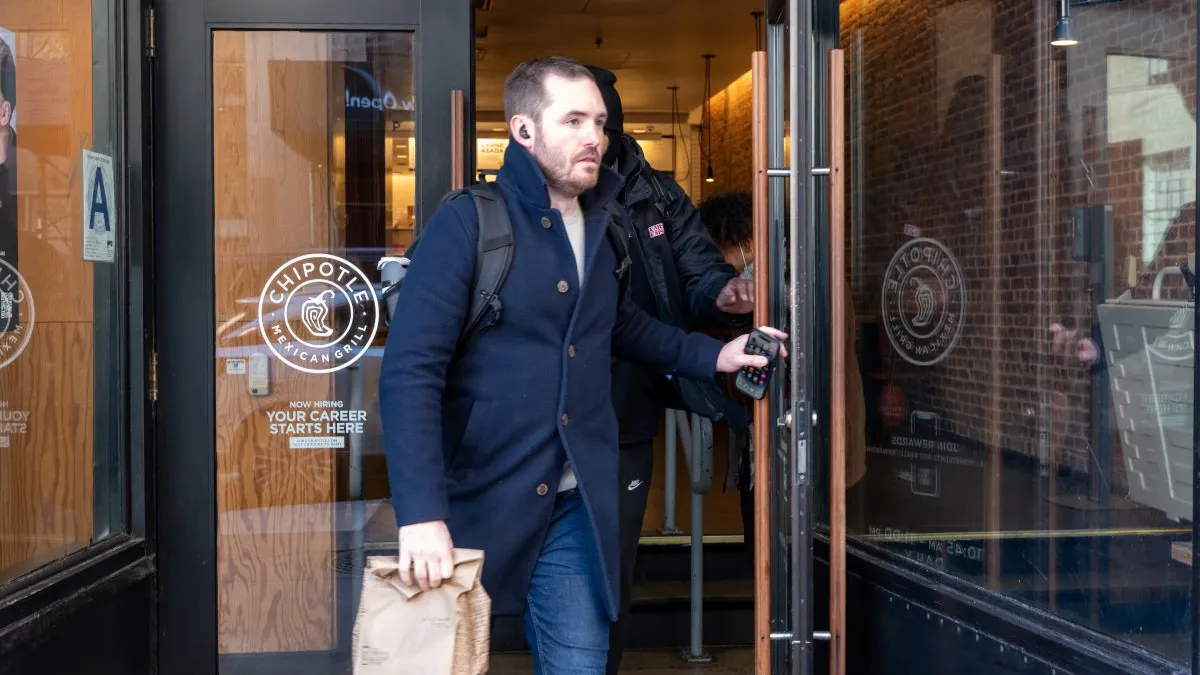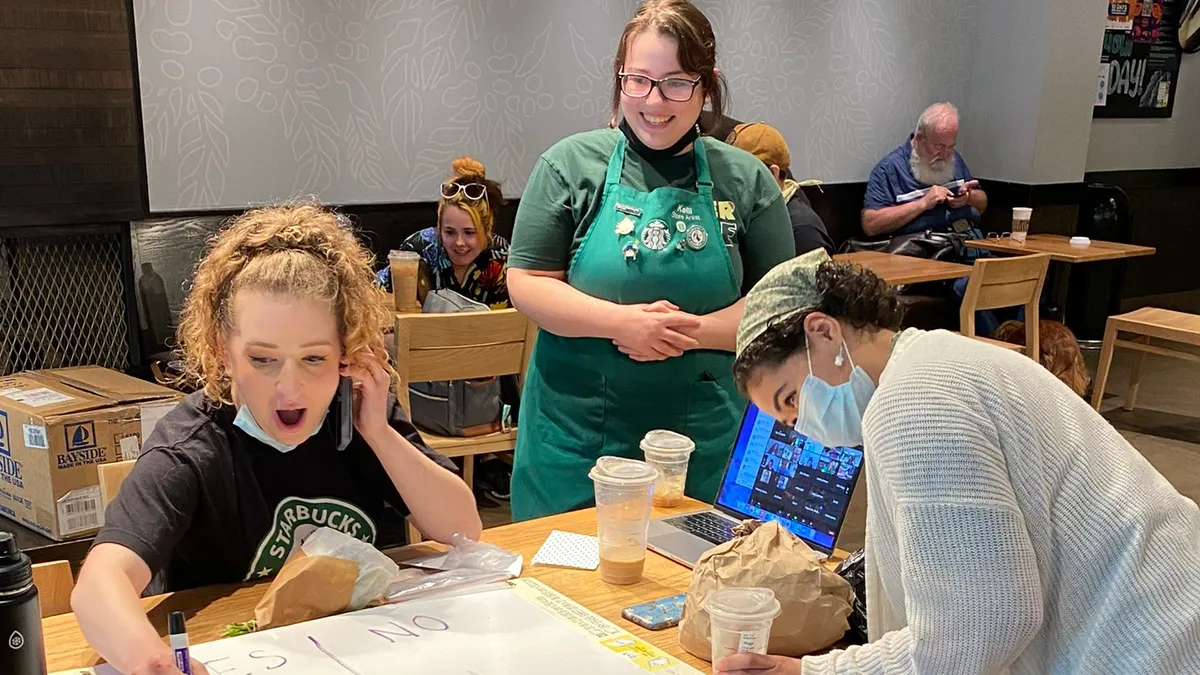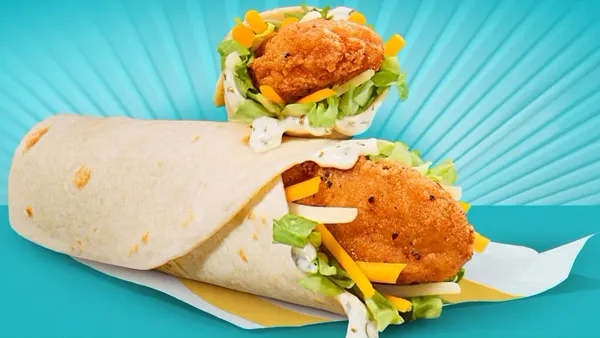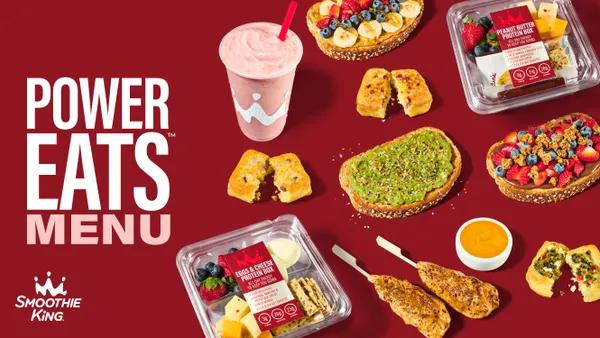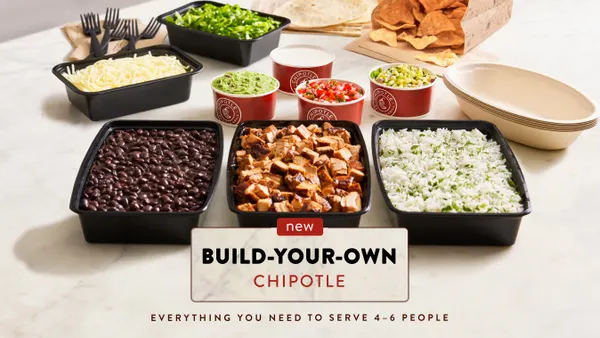Q2 2025 saw the sales weakness that hit many chains in Q1 continue. Brands like Chipotle and Starbucks extended their same-store sales declines, but other brands, like Applebee’s and McDonald’s, reversed recent sales slides with menu innovation and value plays.
Perhaps the most interesting thing to emerge from Q2’s earnings calls is a general slowdown at fast casual chains. Wingstop and Cava, major winners in 2024, both saw sales momentum stall, with the chicken chain posting negative comps and the Mediterranean brand managing same-store sales growth on flat traffic.
Check out how 21 major brands have performed in the past eight quarters. These charts will be updated in subsequent quarters.
Quick-service restaurant U.S. same-store sales
McDonald’s in Q2 managed to recover from its same-store sales wobbles of recent quarters, posting 2.5% growth. The Golden Arches attributed its success to several factors. First, menu innovation at the chain, especially in chicken, brought in consumers to try its McCrispy Chicken strips — the Q3 launch of Snack Wraps could keep that momentum going. Second, the chain’s loyalty program is succeeding in driving repeat visits, with loyalty members visiting more than twice as often as non-members. And finally, the brand’s value platform, which it began building up last year with the $5 Meal Deal, helped bring in price-sensitive diners.
Yum Brands again reported a major divergence in U.S. sales performance between Taco Bell and all three of its other brands. Taco Bell continued its positive same-store sales streak with a 4% increase, thanks to its aggressive value strategy, new menu items and the dramatic growth of its loyalty program. KFC’s same-store sales remained negative, and the brand is in the early stages of a turnaround, using limited-time fan-favorites to try and drive traffic, while shaping up a new marketing strategy.
Restaurant Brand International’s keystone U.S. brands, Popeyes and Burger King, both saw relatively strong same-store sales growth in 2023 that evaporated in 2024 — Burger King returned to same-store sales growth in Q2, however. The burger brand’s barbell pricing strategy was one driver of growth, a second major driver was the renovation of Burger King’s storebase. RBI said it has seen particularly strong results with remodels at former Carrols’ units, which is helping speed up refranchising.
RBI is trying to improve Popeyes’ brand performance through its Easy-to-Run initiative, which is intended to streamline operations at the chicken chain.
“The big thing on Popeyes is we've got to get better at running the stores. We're doing it. We're getting improvements,” Executive Chairman Patrick Doyle said on RBI’s earnings call. He added that he suspects privately held chicken competitors are likely seeing similar sales pressure.
Wendy’s, facing a second straight quarter of quavering comps, is looking to the upcoming launch of chicken tenders in Q4 to help it improve its sales. The brand’s deluge of marketing this summer diluted its efforts, and the chain said it may have missed the opportunity for more focused messaging. Premium drinks, including cold brew coffee with cold foam, could also play a role in returning Wendy’s to sales growth.
Starbucks saw its sixth straight quarter of same-store sales declines, though it seems the coffee brand’s comps hemorrhage may be slowing. CEO Brian Niccol pledged $500 million in additional labor, and said the brand would spend up to a $150 million program refreshing about 1,000 stores in the U.S. this calendar year in an effort to improve ambiance and store experience. After cutting a major portion of its menu earlier this year, Starbucks is looking to rollout new premium coffees and food options in the coming quarters.
Pizza delivery restaurant U.S. same-store sales
Both Domino’s and Papa Johns notched positive comps in the U.S. this quarter, while Pizza Hut suffered a 5% drop.
Domino’s Parmesan Stuffed Crust pizza, which launched in Q1, had a bigger positive impact in Q2, in accordance with CEO Russel Weiner’s prediction on a previous earnings call. The chain completed its full rollout with DoorDash, which means it is now available on the two largest third-party delivery aggregators — Domino’s started work with Uber Eats in 2023. This increased availability helped end several quarters of declining comparable delivery sales. Delivery tends to have a higher ticket than carryout, making an increase in this channel particularly important.
Todd Penegor’s focus on core pizza products seems to have paid off for Papa Johns this quarter, with the core category “up 6% in the second quarter, [and] continues to grow nicely into the third quarter,” according to the brand’s earnings call.
Penegor said the chain’s sales growth came “on the heels of transaction growth being up 1%.”
Pizza Hut was the odd man out in the publicly traded portion of the pizza segment this quarter. Yum Brands CEO David Gibbs said on the company’s earnings call that the chain’s new menu innovation still left it with “an insufficient value message amid a competitive value landscape [that] resulted in transaction softness.”
To remedy that Pizza Hut is working on improving its value-proposition through promotions like Wing Wednesday and $2 Personal Pan Pizzas on Tuesdays, Gibbs said.
Fast casual restaurant U.S. same-store sales
The second quarter marked a difficult shift in the fast casual segment, with Chipotle and Sweetgreen extending streaks of declining comps and Wingstop reporting its first decline in sales since Q2 2022. But CEO Michael Skipworth said that the chain was comparing against high sales growth of 28.4% in the year-ago quarter. This decline could be short-lived as Wingstop continues to deploy its Wingstop Smart Kitchen, which is helping speed up transactions and drive year-over-year sales growth.
Sweetgreen continues to struggle with profitability issues and its decline was one of the worst among the cohort Restaurant Dive follows. The chain removed its Ripple Fries from the menu due to added operational complexities. It also cut 10% of open and existing roles at its support center.
Chipotle suffered one of its worst quarters for sales growth since 2020. The third quarter could mark a shift back into positive territory, however, following positive comp and transaction growth at the end of the quarter that continued into July. The chain enhanced its marketing efforts, particularly through its rewards program, and will increase its LTO cadence from two to three times a year, which could drive more traffic in future quarters.
Cava’s same-store sales growth moderated during the quarter and traffic was flat, but the chain remains optimistic about its ability to grow market share. The chain hasn’t seen a dramatic impact from consumer price sensitivity and is seeing an increase in premium attachments.
Shake Shack posted modest same-store sales growth during the quarter, driven by a shift in order mix and increase in prices that offset traffic declines. The chain plans to invest more in paid media and ad spend, which could help drive traffic and sales going forward.
Potbelly outperformed the rest of the fast casual segment, boosting same-store sales by 3%. The company reported positive traffic and new unit growth for the quarter that was above expectations, according to an earnings release. The company will continue innovating its menu, updating its consumer-facing technology and modernizing its store footprint.
Casual restaurant U.S. same-store sales
Applebee’s broke its negative same-store sales streak, turning sales and traffic positive during the second quarter. Dine Brands’ CEO, John Peyton, credited menu innovation and the brand’s value platform for helping drive growth for the chain. IHOP, however, didn’t fare as well, continuing a run of same-store sales declines that has persisted across the last six quarters. IHOP is undertaking several initiatives to drive traffic and sales, including a value menu, and boosting marketing efforts to attract younger consumers.
Denny’s posted a mild decline in same-store sales of 1.3%, improving over its 3% decrease in the first quarter, CEO Kelli Valade said during an earnings call. Its four strongest markets, Los Angeles, San Francisco, Houston and Phoenix, all experienced disproportionate macroeconomic pressure, leading to a 30-basis-point reduction in systemwide comparable sales during the quarter. The company is focused on driving profitability and continues to outperform family dining in California. It continues to improve its value proposition and it added a buy-one-get-one Slam for $1, which helped drive traffic from new and lapsed users.
Olive Garden has posted three quarters of same-store sales growth. It saw a boost in sales and traffic with the return of its buy-one-take-one offer after a five-year absence and meaningful growth in off-premise. The brand also completed the rollout of Uber Direct across its system, which management expects will be a sales driver over time.
Chili’s is the outlier among publicly traded casual chain, with same-store sales gains of over 23% in fiscal Q4 2025. The company is now in its third year following its turnaround efforts, and its traffic and sales momentum is expected to continue into the next four fiscal quarters.
Correction: A previous version of these charts incorrectly labeled same-store sales for Olive Garden.


